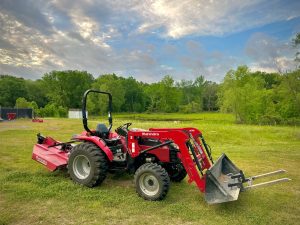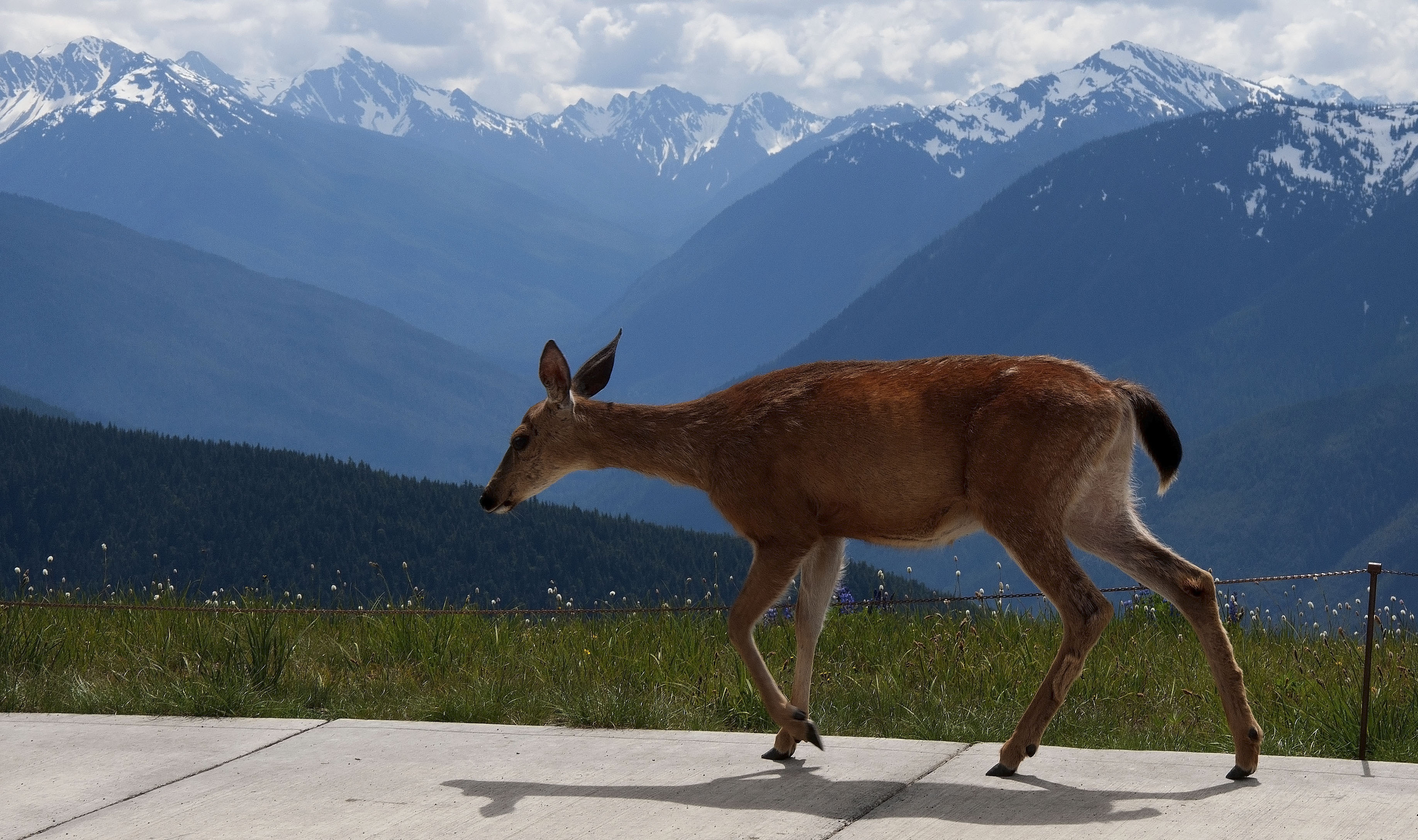PTO on a Tractor = Pretty Terrible Ordeal
With bushhog season about to commence here at Three Geese Farm, it was time to remove the box blade attachment and attach the bushhog, also called a rotary cutter. I used the box blade during the winter months to lay down and smooth two pads of crushed limestone on which the chicken coop and adjoining greenhouse were built, plus patch a few rutted paths used by the tractor. I bought 15 yards of limestone and 5 yards of river rock from a fellow who delivered it to the gravel parking lot down the hill from our house, which is home to a natural gas well. The gas company built the parking lot, which is ugly but useful. An 18-wheeler can easily turn around down there, and the lot is home to piles of rock, dirt, and farm implements. It won’t win any beautification awards, but it comes in handy.
In our nearly four years here at the farm, my tractor maintenance skills have improved markedly. I had no trouble taking the box blade off the three-point hitch that connects it to the tractor. Ditto for hooking the lower lift arms to the bushhog. Early on, little brother Gregg, a former diesel mechanic in the Marines, told me to buy a hefty ball-peen hammer. It is invaluable when hooking or unhooking the various implements I use — harrow disc, rake, box blade and bushhog.
On a three-point system, the lower lift-arms raise and lower whatever is connected to the tractor. The top, or center, link controls the angle and tilt of the attached implement. That completes the triangle for the three-point hitch, invented in the 1920s by Harry Ferguson, an Irish engineer. (His name lives on in those bright-red Massey-Ferguson tractors. I have a 38-horsepower Mahindra, also bright red. It is owned by an Indian company but was made in South Korea. Glad I got it before the tariffs kicked in.)
Before hooking up the top link, I had to connect the bushhog’s shaft to the tractor’s PTO. That stands for Power Take-Off. It transfers the mechanical power from the tractor engine to the bushhog. (The box blade, rake and harrow disc don’t use the PTO. They are just dragged behind the tractor and controlled by raising and lowering the implement.)
PTO could also stand for Pretty Terrible Ordeal because it usually is, at least for me. The system has been around since its invention in 1918 by another vaunted tractor name – International Harvester. It took about two decades before the American Society of Agricultural Engineers standardized the PTO shaft, with six splines for smaller tractors, so implements using it could be interchangeably used. Standardization meant a bushhog or other PTO-powered implement could be any brand and work on any tractor.
This was indisputably a wise move. Trouble is, whoever designed the PTO could not have made it more difficult to actually install an implement. It forces one into an awkward position that results in skinned knuckles, lower back pain, creaky knees, and massive amounts of frustration that can only be relieved with a string of curse words and a cold beer. The inventor of the PTO must have hated farmers. (I am not really a farmer; I just play one at Three Geese Farm.)
How it works: You have to hold down the release button while trying to fit the splines onto the shaft, then shove it forward until it clicks into place. Sounds simple enough except the shaft is made of heavy metal as is the PTO. Both are heavy, greasy, and largely uncooperative. Especially on this particular Sunday afternoon. The PTO shaft wasn’t going anywhere. The next morning, I texted my mobile tractor mechanic, figuring it would be at least a week before he had time to come out. I got lucky. He showed up right after lunch. This fellow can fix anything that has an internal combustion engine, from bulldozers to zero-turn mowers, pickups to tractors of all sizes. He is not cheap but worth it since his work thus far has been exemplary.
When he couldn’t move the PTO shaft, my mechanic pulled out that invaluable tractor tool – a small sledgehammer. A couple of whacks freed the shaft, which consists of two telescoping tubes, one tucked tightly inside the other. Since the bushhog spent all winter out in the elements, the tubes had rusted together.
Being a big, strong guy with meaty hands helps when working on machinery. I am short with small hands and an aversion to grease. He connected the bushhog to the PTO, where it will stay until the leaves fall from the trees to mark the end of another mowing season. Since I was going to pay a trip charge anyway, the mechanic inspected the tractor, greased all its fittings, checked for fluid leaks, and pronounced the tractor ready for use.
As soon as the wildflowers go to seed, in the next few weeks, I’ll plug my ears and listen to the Red Clay Strays or another of my favorite bands while bushhogging. That is if my Beautiful Mystery Companion doesn’t beat me to the tractor seat. She enjoys mowing even more than I do.
Leave a reply
Fields marked with * are required











